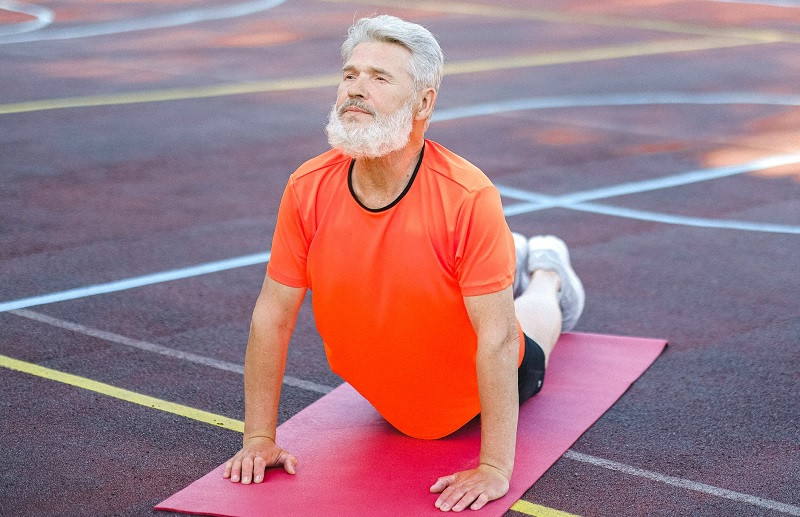
On many occasions, sport is spoken of as one of the best protective factors against diseases of all kinds.
Although it is evident that exercise is useful for cardiovascular diseases, obesity or diabetes, its effect on neurodegenerative diseases such as Parkinson’s, although suspected, was not so clear.
Does exercising protect against Parkinson’s disease? This is the question we are going to answer in the next paragraphs. Keep reading to find out the answer!
Does regular exercise protect against Parkinson’s disease?
We often hear that practicing sports can be beneficial not only for our physical health, but also for our mental health. It is often said that the practice of regular physical activity can be a factor of protection and prevention of diseases associated with old age. Given the frequency, severity and great family and social cost of certain neurodegenerative diseases, such as Alzheimer’s and Parkinson’s, much research has tried to see if there is a lower risk of suffering from these problems when exercising.
Over the decades, several of these investigations have revealed evidence that yes, practicing exercise protects against Parkinson’s disease and other dementias. The first study to address this question was that of Sasco and colleagues, in 1992. Their research group had the merit of being the first to reveal that a high level of physical activity could reduce the risk of Parkinson’s disease. In their case, it was an epidemiological study, with cases and control.
More than a decade later, in 2005, a work carried out by the group of Chen and colleagues would be published in which evidence was also provided that gave strength to the idea that exercising at high levels was associated with a reduced risk of suffering from Parkinson’s in men. In their case, they studied a sample made up of 48,574 men and 77,254 women, all of them belonging to the field of health sciences, following how their health progressed over 19 years.
In this second study it was observed that Men who practiced intense exercise an average of 10 months a year benefited from a significant reduction in the risk of developing Parkinson’s. Individuals who had an active life were about 60% less likely to suffer from neurodegenerative diseases compared to those who, on average, exercised two or fewer months a year.

Another study by Xu et al. (2010) published in the journal Neurology, with 213,701 participants and obtaining similar results to the previous case. In this case, the participants were part of the US National Institute of Nutrition Diet and Health Study (NIH-AARP) cohort. Through his research, it was found that People who did moderate-intense exercise at ages 25-29 and in the ten years prior to the end of the study had a 40% lower risk of suffering from Parkinson’s disease compared to sedentary participants.
We could continue talking about the many investigations that have addressed this same question and have obtained similar results, varying in gender and nationality. What most of them conclude is that leading an active lifestyle is a good protective factor against the possibility of suffering from neurodegenerative diseases, especially if you do sports in a moderate to intense way.
The type of sport did not matter: swimming, tennis, jogging, cycling, aerobic and anaerobic exercises… Everything seems to indicate that practicing sports, at least in general terms, protects against Parkinson’s.
Meta-analysis on Parkinson’s and sports
As we said, there have been many studies that have addressed how exercising can function as a protective factor against Parkinson’s disease. This was investigated in the form of a meta-analysis in 2018 with a study published in JAMA Neurology. This work consists of a large systematic review and meta-analysis of prospective studies related to the topic and that gave even more strength to the benefits of exercise in preventing Parkinson’s.
The objective set by the group of Fang and colleagues behind this meta-analysis was to quantify the dose-response association between physical activity and the risk of suffering from Parkinson’s disease. To this end, a systematic review was carried out in search of those articles that addressed the topic, finding them in sources of prestige and scientific rigor such as PubMed, Embase and Web of Science.
In their research, they managed to identify eight prospective studies that totaled 544,336 participants and were followed for an average of 12 years (6.1 to 22 years). The total number of Parkinson’s cases identified during the studies was 2,192. As a result, the researchers observed an association between both a high level of total physical activity (21%) and between moderate-intense physical activity (29%) and a reduced risk of neurodegenerative disease, especially among men. Light physical activity was not associated with risk reduction.
How would physical activity prevent Parkinson’s?
Based on the multiple investigations that address the topic, it seems to be clear that regular exercise is an important and effective protective factor against suffering from Parkinson’s disease. Now, the key question comes: how does exercise reduce the risk of suffering from this disease? Various mechanisms have been suggested that could explain the great neuroprotective effect of physical activity.
It has been seen with laboratory animals that Regular exercise contributes to the conservation of dopaminergic function, a function that is severely affected in Parkinson’s disease due to the destruction of the cells of the substantia nigra. Added to this, it has been observed that regular physical activity reduces the damage of dopaminergic cells in motor circuits, such as in the striatum and the mesocortical system.
Another possible mechanism that would explain the benefits of exercise in preventing Parkinson’s would be that physical activity reduces cellular inflammation and oxidative stress. Added to this, physical exercise has a neuroprotective effectcontributing to the expression of developmental factors such as brain-derived neurotropic factor and glia-derived neurotropic factor.
Can physical exercise help those who already suffer from the disease?
It has been seen that physical exercise not only serves to prevent Parkinson’s disease but can also help those who already suffer from neurodegeneration, something that in fact is already applied in therapy with this type of patient.
Physical activity is part of the therapy and management of the conditionand serves to delay the motor deterioration responsible for the typical signs associated with the disease such as tremors, joint stiffness and slowness of movement, prolonging the functional independence of those affected.
Exercises that enhance strength and dynamic stretching significantly help delay the progression of symptoms, both physically and cognitively. A good example of an exercise with these characteristics is Tai Chi.a Chinese martial art that significantly improves balance and increases strength, mobility and mental state, in addition to being safe and having a very reduced risk of falls.
How much exercise is necessary?
At this point, we will mention how much physical activity is recommended not only to prevent the appearance and development of neurodegenerative diseases such as Alzheimer’s and Parkinson’s, but also to contribute to having a perfect physical and psychological state at any age and under any condition.
Although there are different guides on the level of exercise necessary to have a good physical and mental condition, we will base ourselves on the Physical Activity Guide prepared by the American Heart Association and which is usually used as a reference worldwide.
Preschool children (3 to 5 years old) should be physically active all day to promote their growth and development. Children and adolescents (6 to 17) should get a minimum of 60 minutes of moderate to vigorous exercise per day. From the age of 17, in young adulthood and middle age, light and moderate aerobic exercise is recommended.with activities such as brisk walking (150 to 300 minutes per week) and intense activities such as cycling or running (75 to 150 minutes).
As for the elderly (65 years or older), they are advised the practice of multicomponent physical activities, practicing balance and flexibility, in addition to performing aerobic and strength exercises to reduce muscle atrophy, fragility and falls. If you suffer from a chronic illness or disability, you should try to practice the recommended exercise according to your age, within the patient’s capabilities.
It should be said that, no matter how little intense the physical activity is, it is always better than having a sedentary and inactive lifestyle. The ideal is to achieve the recommended weekly goals but, if you cannot achieve them, do not get discouraged and try to incorporate some exercise into your weekly routine. If you do more than what is recommended, even better, since it will bring with it added cardiovascular benefits, although you should always avoid overexertion and push your body to the limit.
Although exercise does not ensure that we will not suffer from any neurodegenerative disease, it does significantly reduce the chances of suffering from it.. This should be seen as a message of hope and encouragement for those who have a family history of these diseases and understand that frequent exercise is our best preventive medicine for all types of diseases, including neurodegenerative diseases such as Parkinson’s.








